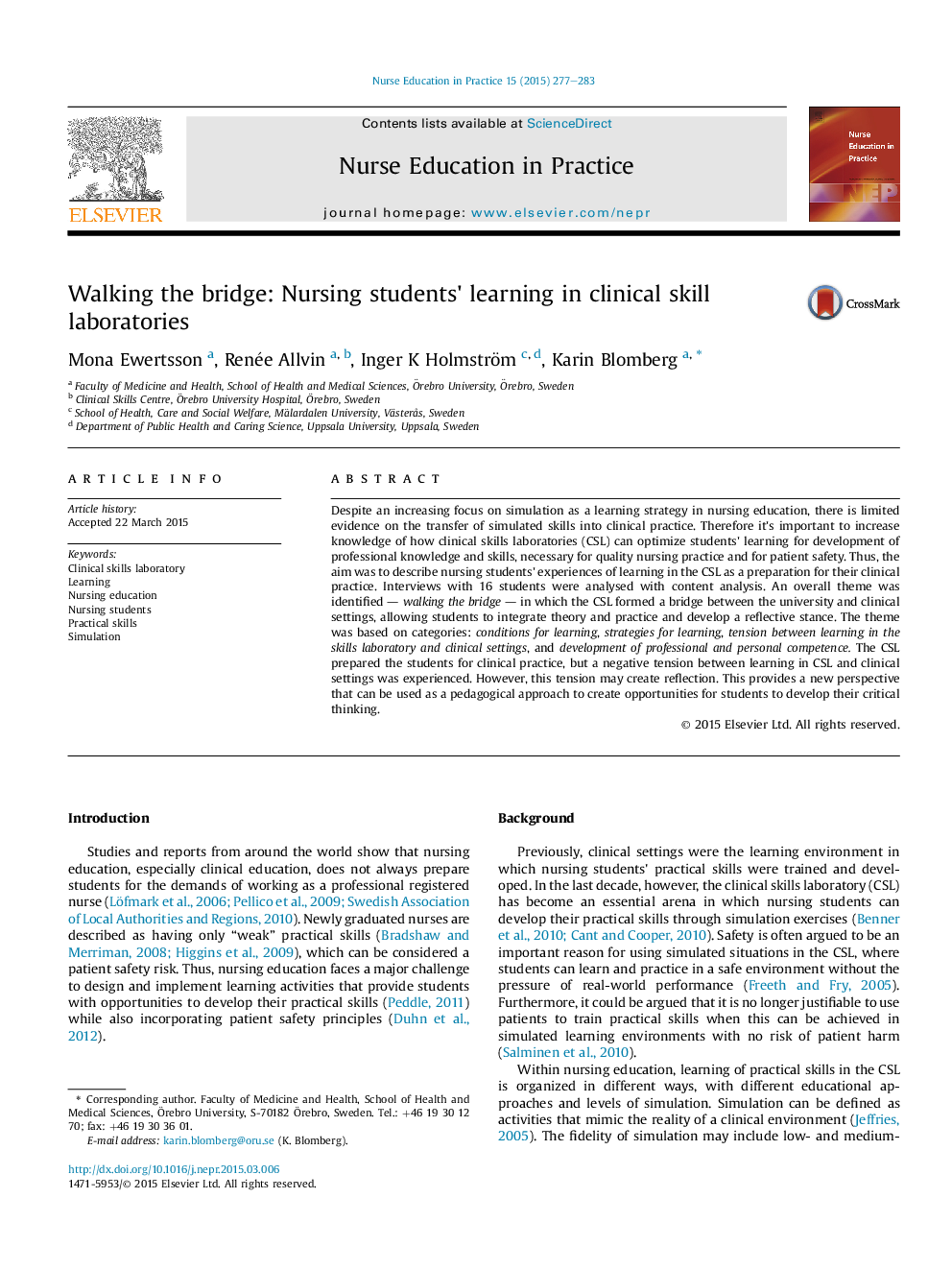| Article ID | Journal | Published Year | Pages | File Type |
|---|---|---|---|---|
| 366914 | Nurse Education in Practice | 2015 | 7 Pages |
•The students were generally satisfied with learning in the clinical skill laboratory.•Simulation in the clinical skills laboratory prepared the students for their clinical practice.•The clinical skill laboratory formed a bridge between the university and clinical settings.•A tension between learning in clinical skill laboratories and in clinical settings was identified.•The differences perceived by the students gave opportunities to reflect and evaluate different ways of performing procedures.
Despite an increasing focus on simulation as a learning strategy in nursing education, there is limited evidence on the transfer of simulated skills into clinical practice. Therefore it's important to increase knowledge of how clinical skills laboratories (CSL) can optimize students' learning for development of professional knowledge and skills, necessary for quality nursing practice and for patient safety. Thus, the aim was to describe nursing students' experiences of learning in the CSL as a preparation for their clinical practice. Interviews with 16 students were analysed with content analysis. An overall theme was identified — walking the bridge — in which the CSL formed a bridge between the university and clinical settings, allowing students to integrate theory and practice and develop a reflective stance. The theme was based on categories: conditions for learning, strategies for learning, tension between learning in the skills laboratory and clinical settings, and development of professional and personal competence. The CSL prepared the students for clinical practice, but a negative tension between learning in CSL and clinical settings was experienced. However, this tension may create reflection. This provides a new perspective that can be used as a pedagogical approach to create opportunities for students to develop their critical thinking.
